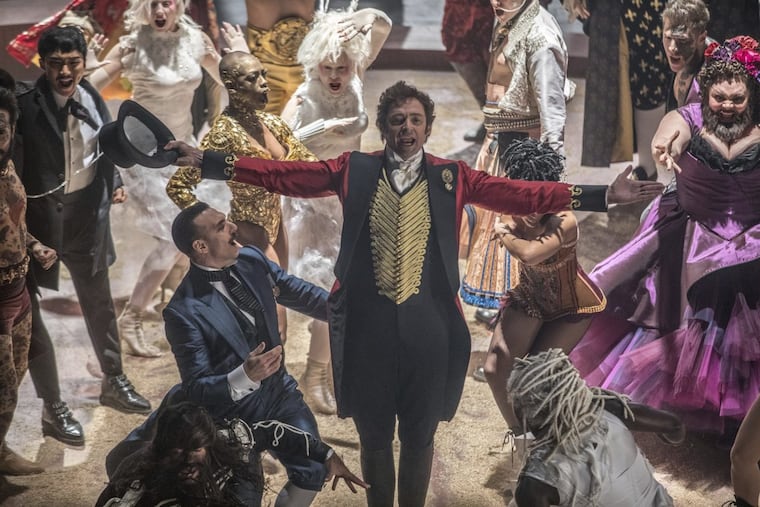'The Greatest Showman' is the latest Hollywood whitewashing of America's racist past | Opinion
When we whitewash history, we risk two things: First, we diminish the crimes committed by whites. Second, we minimize the suffering of people of color.

Here's how the fictional P.T. Barnum, the subject of the just-released The Greatest Showman, gets his start: He creates a theater for the "curiosities" who span the racial and gender spectrum. "They're going to love you," Barnum tells the so-called Bearded Lady, who goes on to sing "This is me" in a celebration of inclusion. The fictional Barnum gives these people more than a job; he gives them a family.
Here's how the real P.T. Barnum got his start: He heard about a slave named Joice Heth. Her owners said she was 161 years old and claimed that she was the nurse of George Washington. Heth was instructed to tell the many onlookers who came to see her about her relationship with the country's first president. "In fact," she said to crowds in Philadelphia, "I raised him." In 1835, Barnum visited Philadelphia and bought Heth —"I became the proprietor of the negress"— and began to display her at Niblo's, a theater at Prince Street and Broadway in Manhattan. Barnum bought Heth for $1,000, but after he and William Niblo printed handbills and took out ads all over town —"The greatest curiosity in the world"— they cleared more than $1,500 a week, according to Barnum's autobiography.
Because some northerners were wary of paying money to gawk at a slave, Barnum planted rumors in the press that she was not a slave and was saving money to buy her great-grandchildren out of slavery. This was a lie; Heth died a slave, and when she died, Barnum displayed her remains to gawking crowds.
That The Greatest Showman erased Heth from its narrative is no surprise: it's hard to tell a feel-good story about a man when he got his start by profiting off an elderly slave. The story the film tells is one of inclusion — Barnum creates a home for the "curiosities" of all colors. Indeed, the real-life Barnum, after this despicable beginning, became relatively progressive for his day. But it's important to understand that removing Heth from the narrative is an act of historical violence.
It's important to admit that all historical films need to make choices to fit a messy world into a two-hour story arc.
And we can excuse some of The Greatest Showman's minor errors. The incandescent lights depicted throughout the film did not illuminate American cities until Barnum's final years. The paparazzi who captured a quick kiss couldn't have done so at the point depicted in the film — 1850 — because film exposure time back then was measured in minutes, not seconds.
In The Greatest Showman, the interracial band of brothers and sisters rise up and assert their place despite society's disapproval. The group dances together, beats the naysayers, and two cast members — one white and one black — are able to "rewrite the stars" and embrace in a celebratory kiss. In reality, the vast majority of African Americans throughout the South were enslaved and the ones in the North were subject to poverty, taunts, riots, and random violence and death. In brutal antebellum America, no one could "rewrite the stars" for people of color.
Much has been written in recent years about how historical films depict race. In Steven Spielberg's majestic Lincoln, we see transformative depictions of Lincoln and his cabinet. As a historian of 19th century America, I was amazed by Spielberg's ability to resurrect many of the figures I've studied for years in old books and microfilms. But the film nonetheless downplayed the role of African American activists in passing the 13th Amendment, the one that ended slavery.
The depiction of race in The Greatest Showman, while offering a hopeful spirit of inclusiveness, is nonetheless a lie. When we whitewash history, we risk two things: First, we diminish the crimes committed by whites. Second, we minimize the suffering of people of color.
Most important, our history doesn't make sense when we omit racial injustice.
Without grappling with the history of Southern lynching, for example, we can't understand the Great Migration of African Americans to Northern cities. Without understanding redlining, the systematic 20th-century practice of excluding African Americans from becoming homeowners, we can't understand the wealth disparity between races. Likewise, when we celebrate a fictional 19th century in which African Americans are free to transcend the great evil of slavery, we diminish their suffering. We wouldn't — and shouldn't — base a hopeful musical on Auschwitz. Allowing the fictional characters of The Greatest Showman to easily overcome the obstacles of racism, to "rewrite the stars," rewrites history.
David Mindich is the chair of the journalism department at the Klein College of Media and Communication at Temple University. Before becoming a professor, Mindich worked as an assignment editor for CNN and earned a doctorate in American studies from New York University. mindich@temple.edu @dmindich